Thought Sculpture 2018
13.04.2018. 6 - 8 pm. > Lőrinc Borsos, Lindsay Lawson
27.04.2018. - 8 pm. > Zach Blas, Andy Holden, Dominika Trapp
04.05.2018. 6:45 pm. > Roman Štětina
10.05.2018. 6 - 8 pm. > Alex Mirutziu, Ryan Rivadeneyra
01.06.2018. 6 - 8 pm. > Pavel Sterec, Christina Varvia - Forensic Architecture
Curator: Borbála Szalai
Venue: Trafoclub
Free entrance. The lecture-performances will be in English, except the performance by Dominika Trapp on the 27.04.2018.
13.04.2018. 6 - 8 pm.
Lőrinc Borsos: Together Forever
(Tips for a soaring marriage in 45 minutes)
Quasi couples therapy by the Lőrinc Borsos married-artist-couple.
“Would you like to live in a happy relationship? Would you like to know how to keep the spark alive? Would you like to experience unity on an artistic level? If you feel touched by the above mentioned, you should come! We’ll provide wish candles and loads of positive energy!”
LŐRINC BORSOS Lilla Lőrinc (1980) and János Borsos (1979) work together since 2008 as Lőrinc Borsos. The name covers an entity with its own creative consciousness. His/her gender, sexual orientation and intellect are equally characterized by bipolarity. Lőrinc Borsos – not someone to shy away from technological innovation - was initially interested in examining questions of national self-representation, and later in those relating to contemporary social problems. More recently, Borsos has concentrated more and more on the medium of painting itself, and specifically on black paint: the extent to which it can be directed, its relationship to its environment, and its dependence on external influences.
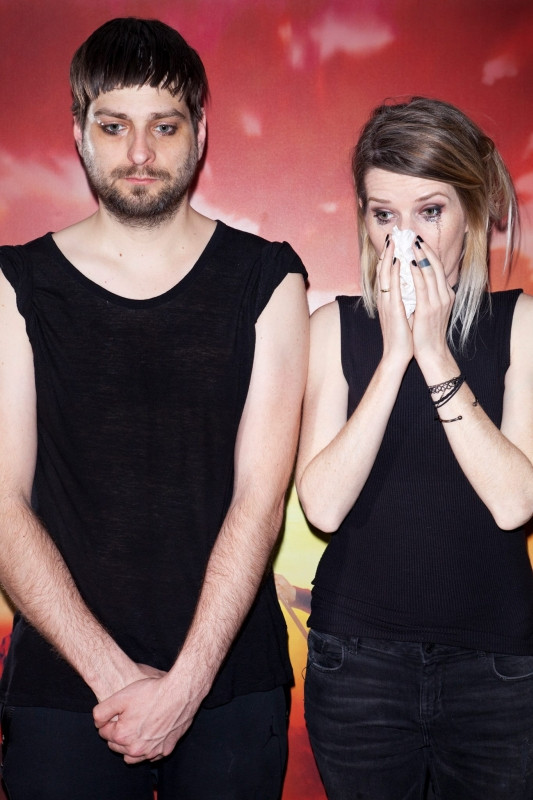
Photo: Éva Szombat
Lindsay Lawson: The Real Smiling Rock
Lawson’s lecture-performance guides through the artist’s years-long chase after a rock, which was listed on eBay for $1,000,000. The high price is due to its singularity: it is a geode boasting a clownish smiley face on its polished face. The lecture-performance evolves a personal story fuelled by obsession, where its surprising episodes, the artist’s particular relation to the stone, and her artworks and exhibitions that are connected to this topic are all arranged into a tight fabric.
Lindsay Lawson (b. 1982 in the United States, living in Berlin). She received her MFA in New Genres from UCLA, and attended the Städelschule, Frankfurt. She recently presented a large-scale performance titled Choreography for Crane as part of the 9th Berlin Biennale. She recently had solo shows at 8eleven, Toronto; Entrée, Bergen, 1646, The Hague; Canapé Canopy Gillmeier Rech, Berlin. Her artworks were presented in Hometown, Brooklyn, NY; TEA Museum, Tenerife; Centre Pompidou, Paris; Kunsthaus Hamburg or at 9th Shanghai Biennale among many others.
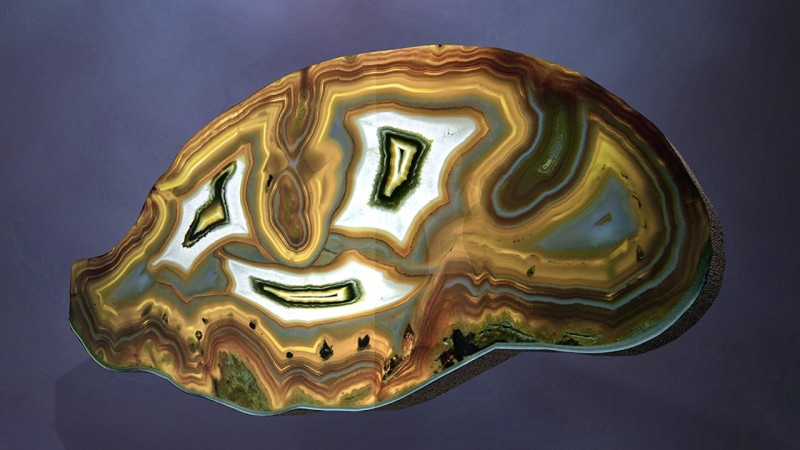
Lindsay Lawson: The Smiling Rock, 2015. Video still
27.04.2018. - 8 pm.
Zach Blas: Metric Mysticism
In this lecture-performance Blas gazes into the crystal balls of Silicon Valley and charts the transmutation of big data into a magical substance that predicts—and polices—our future. Focusing on the appropriation of mysticism and magic by Silicon Valley start-ups and governmental surveillance agencies alike, Blas suggests that the crystal ball, a transparent device that permits one to see into the future, has come to stand in as a paradigm for how tech entrepreneurs prefer to imagine the algorithmic processing of information. Blas asks, against the prediction of the future, if redirecting our gaze can offer a way to better comprehend the crisis of the present?
Metric Mysticism is Blas’s most recent lecture-performance that has been already presented in the last months at Transmediale, Haus der Kulturen der Welt, Berlin; Gasworks, London; Tensta Konsthall, Spånga, Sweden; and in e-flux, New York in conjunction with Blas’s first solo show in New York at Art in General.
Zach Blas is an artist and writer whose practice confronts technologies of capture, security, and control. Recent works have addressed killed chatbots, time travel, the securitization of romance, biometric capture, policing as mysticism, smart drugs and psychedelia, the crystals balls of Silicon Valley, and dildos. Blas is currently a Lecturer in Visual Cultures at Goldsmiths, University of London, and he has exhibited, lectured, and held screenings internationally, recently at the 68th Berlin International Film Festival; Art in General, New York; Gasworks, London; Institute of Modern Art, Brisbane; Van Abbemuseum, Eindhoven; Institute of Contemporary Arts Singapore; e-flux, New York; Whitechapel Gallery, London; and Museo Universitario Arte Contemporáneo, Mexico City.
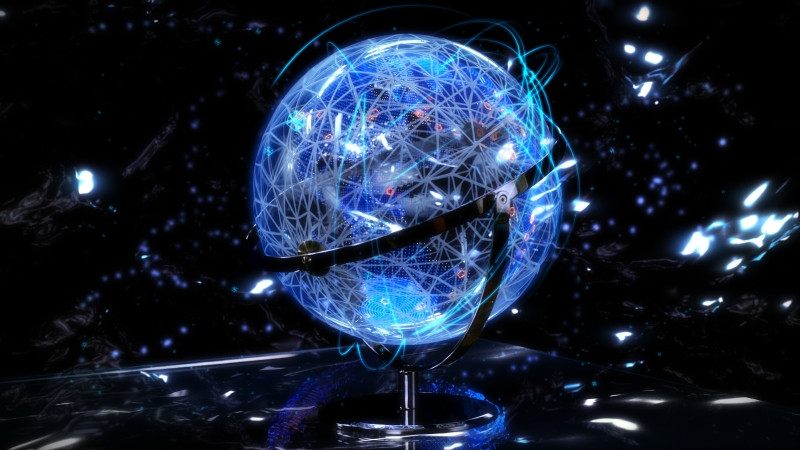
Andy Holden: Laws of Motion in a Cartoon Universe
Part-lecture, part-documentary, part-conspiracy theory, Laws of Motion in a Cartoon Landscape is an animated lecture, in which the artist describes his theory that the world has now become a cartoon. To understand the world, we therefore have to examine how cartoons work, and this is done through exploring the ten laws of physics as they appear in the cartoon landscape. The artist is transformed into a cartoon avatar to explore these laws of the cartoon universe, humorously weaving together physics, economics, philosophy with the history of the animated cartoons. Law 1: Any body suspended in space will remain in space until made aware of its situation, takes us from Newton, to the 2008 banking crash, to how to be an artist in a world where everything has been done, yet certain actions seem to reoccur, and a new type of logic is required.
Laws of Motion in a Cartoon Landscape has been show at Tate Britain, Venice Biennale (2017), Glasgow International (2016), Kunsthalle Viborg, Denmark; Kunstverien Weisbardne; Artuner, New York, and the Future Generation Art Prize, Ukraine.
Andy Holden (b. 1982) lives and works in Bedfordshire, UK. He graduated from Goldsmiths (London) in 2005. Holden is both a multi-media artist and a musician whose body of work is varied and spans across different techniques. He first came to the attention of a large public in 2010 for his ‘Pyramid Piece’ and ‘Return of the Pyramid Piece’, exhibited in the Art Now series at Tate Britain. He has exhibited and performed in such institutions like K-W Berlin; Pulse, New York; Performa 13, New York; Whitechapel Gallery, London; ICA, London; Kunsthalle Rotterdam and Frankfurter Kunstverein.
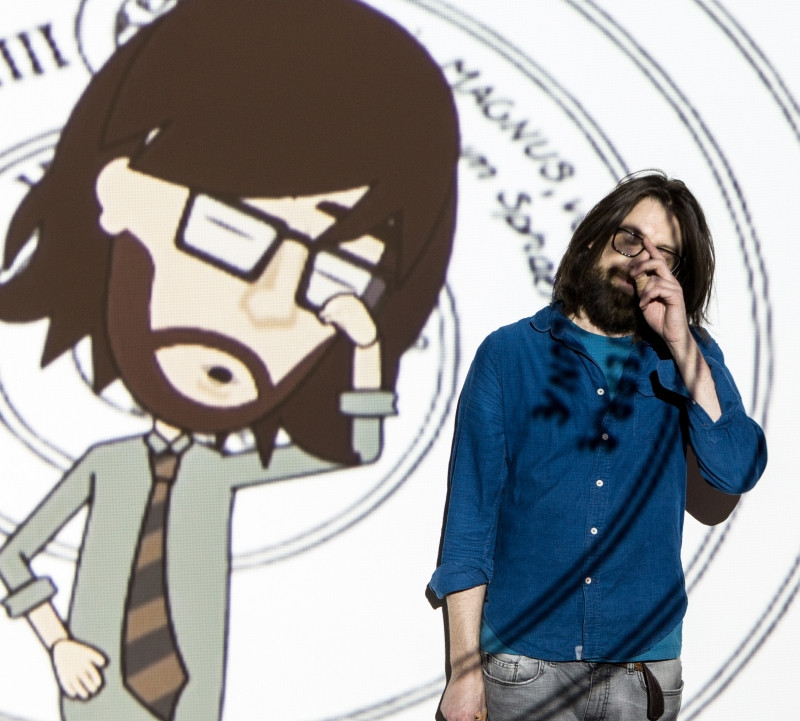
Dominika Trapp: Peasants in Atmosphere – Footnotes
The ensemble Peasants in Atmosphere attempts to give an interpretation of the heritage of traditional culture along critical considerations and bridge the progressive strains of contemporary art and a new generation of the ‘Táncház’ (folk dance house) Movement in the form of collaborative work based on extensive research. Their musical piece and the publication was presented as the final event of OFF-Biennale Budapest 2017.
The presentation-performance at Trafó is based on the documents of the preliminary discussions and will be accompanied by live-music by Márton Bertók, Ádám Kiss-Balbinat and Áron Porteleki. The production attempts to outline the process of synthesis between the members with different backgrounds and artistic intentions, and to show some lines of their partly-common histories.
Dominika Trapp (1988) graduated at the Painting Department of the University of Fine Arts, Budapest in 2012. In her recent research-based projects she deals with the relation of the subject to global/local trends, and the artist’s competence within this context. In her curatorial works she attempts to create a dialogue for communities that are separated from each other because of cultural, political, geographical or other reasons.
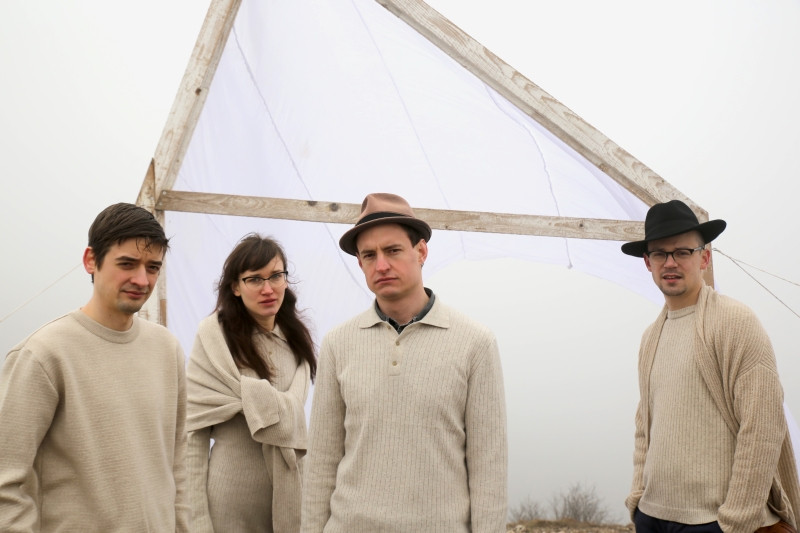
04.05.2018. 6:45 pm
Roman Štětina: The Lost Case. Film screening and discussion
The film study of the detective genre was created by means of re-editing the episodes of a legendary TV series Columbo made between 1968 and 2003. The protagonist Peter Falk closely inspects objects around him, one object leads to the next one. The film follows the object-led contemplative wandering of the protagonist, until he slowly becomes an old man. The film suggests the possibility of a different approach towards objects that is based on the intense and serious observation of them.
Roman Štětina (1986, Kadaň, lives and works in Prague). Štětina graduated from the Academy of Fine Arts in Prague and the Städelschule, Frankfurt. He recently had solo shows at Spike Island, Bristol; Cardiff Contemporary, MNAC Bucharest. He exhibited in group exhibitions at Manifesta 11, Zurich; NEST, Den Haag; National Gallery, Prague; Modern Art Oxford; IV. Moscow International Biennale for Young Art.

Film poster modified by Zdeněk Ziegler, 2014
10.05.2018. 6 - 8 pm.
Alex Mirutziu: Pause for Weight!
My first line of enquiry pursues the problematic of meaning and timing in relation to approximation and proximity as the aggregates for understanding a whatever materiality, both as forms of compression of datum. I delay setting meaning to objects through modes of ephemeral achievement. I want to slow down the speed at which meaning is accumulated and destabilise the modes of production, with problematic actions and orthopaedic narratives, in such a way that the focus is on what is not happening that is less happening.
My second line of enquiry looks at writings, objects, and live actions as arbitrary idealisations of reality. I use decision and position as tools to debunk the supposed given of fixed standpoints from which to make claims.
My third line of enquiry seeks to engineer a body that is distracted, unresolved, and resistant to the impetuous logic of the project. As such, I intend to draw out a poetic of homelessness, a space beyond appearance; exfoliations of personal and historical events, un-suspending the manner in which the space after something ends is orchestrated.
Alex Mirutziu's (b. Romania) practice extends over a wide range of media and activities, including sculpture, drawing, poetry and performance as well as critical and curatorial projects. In his practice he seeks to facilitate a body as ‘turbulent performative occasion’ drawing on the poetic of homelessness, invisibility and beyond, to suspend the set-ups of doing, un-doing, thinking and un-thinking. Alongside himself at 29 he activates within a collective who’s modus operandi is retroactive irony. As part of his theoretical practice the artist frequently lectured on performance (Royal College of Arts, London, Von Kraal Theatre, Estonia, Konstfack, Stockholm, Bezalel University of Art and Design, Tel Aviv). His works were shown at Power Plant, Toronto, The Glass Factory Lab, Boda, Mucsarnok Kusthalle, Budapest, Center for Contemporary Art and National Museum, Warsaw, Museum of Contemporary Art, Bucharest, and in 2015 he represented Romania at Venice Biennale. Currently his works are presented at the exhibition Double Heads Matches in the New Budapest Gallery.
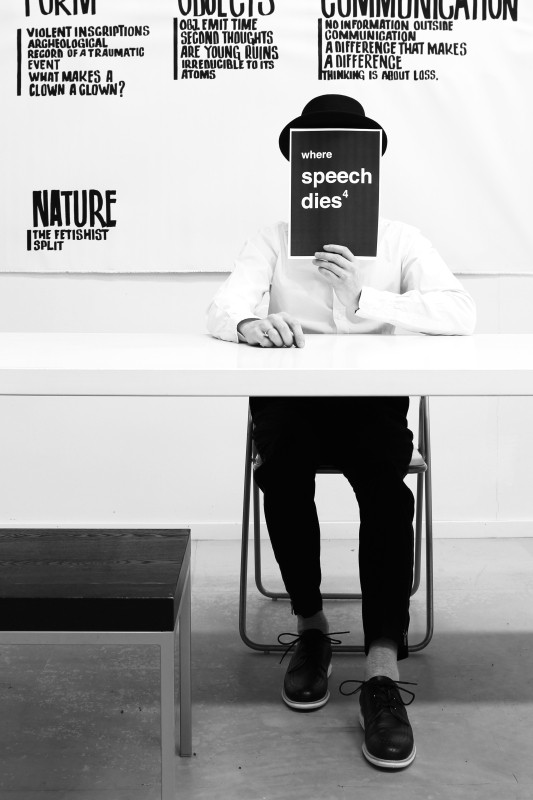
Alex Mirutziu: Where speech dies, 2013
Ryan Rivadeneyra: E-mails Concerning Happenings Considering Photography
In the performance-lecture photographic material is collated through an e-mail correspondence between the artist and Lorenzo Walker, the documenter of Allan Kaprow’s seminal performance pieces. The e-mail dialogue begins as the two discuss the formal and conceptual relationship between live performance and the documentation of such through photography, and slowly unravels into a back-and-forth that tries to locate remnants of Kaprow's happenings through pop, politics, and through the artist's own work.
Ryan Rivadeneyra (Miami, 1984) lives in Barcelona. His recent work raises questions about cultural identity, human interaction, and other issues of the sort. It takes form in a series of micro-narratives that fluctuate between fictional and historical anecdotes and use humour and irony as well as heartfelt sincerity to explore everyday experiences. He has exhibitied at Fundació Tàpies, Barcelona, MACBA, Barcelona, Galerie Juliette Jongma, Amsterdam, Het Paviljoen, Ghent, Casa Hoffman, Bogotá, Flat Time House, London, Helmhaus, Zurich. He studied at the Cooper Union in New York, the Städelschule in Frankfurt, and completed his studies at Sandberg Instituut in Amsterdam in 2016.
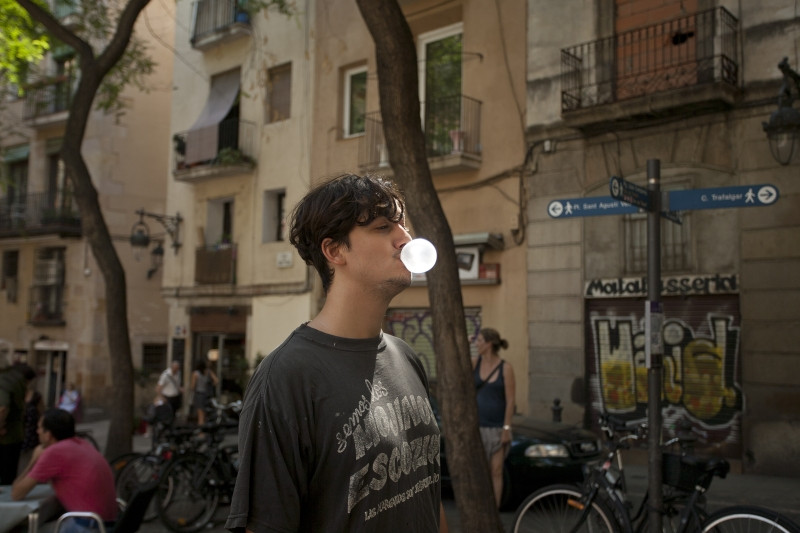
01.06.2018. 6 - 8 pm.
Pavel Sterec: The Silk Road - Embalmment and Mummification
The Chinese investment of hundreds of millions of dollars into one of the biggest infrastructure (neo-imperial) projects of all time, is bringing the term ‘silk road’ on the surface in many unexpected places. The term is catching on geographically and mentally. I opened myself to PR division of Chinese government and I began to associate and to observe. ‘Silk Road’ or better the ‘One Belt One Road Initiative’ brought me close to the development of a highway bridge in Montenegro and Hong Kong, to a railway junction in Kazakhstan and even to an amusement park in Shenzhen, which by getting the world into its 48ha of area, became the ‘retroactive manifesto’ of the planet, sized down and mummified by global capitalism.
Pavel Sterec’s (1985) lives and works in Prague. His work crosses between performance, video, object, installation and photography. His research-based practice is focused on social encounters, which he transforms into conceptual installations. His works reinterpret cultural links and natural phenomena, and
undertake an engaged criticism of the social and political status quo. Sterec has introduced his work at a number of exhibitions primarily in Central and Eastern Europe. He participated in the fellowship program of Apexart, New York, and in the residency-programs at Czech Centre, Bucharest, FKSE, Budapest, AIR CSW Zamek Ujazdowski, Warsaw, VIR Viafarini-in-residence, Milan and CCA Sharhorod (UA).
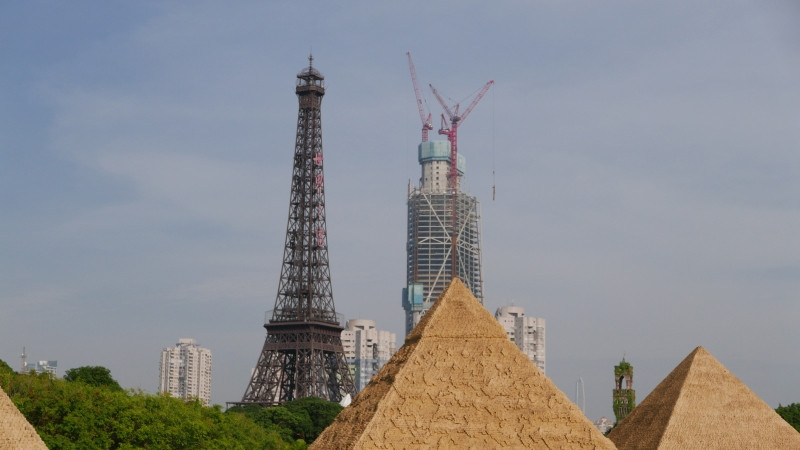
Photo: Pavel Sterec, 2017
Christina Varvia - Forensic Architecture: Sentient crime scenes
Christina Varvia, an architect and researcher at the London-based Forensic Architecture research agency will present the results of the counter investigation in relation to the murder of Halit Yozgat in Kassel in 2006. The 21-year-old Halit Yozgat was the ninth victim of what was later revealed to be a connected series of racially motivated murders carried out by National Socialist Underground (NSU), a far-right German terrorist group. After the investigations into the activities of the NSU became public, it has surfaced that the German intelligence service had infiltrated the far-right terrorist cell with undercover agents; one of them, Andreas Temme, was present during Halit’s murder at his family’s internet café in Kassel. Forensic Architecture, which has previously investigated war crimes in Gaza, former Yugoslavia, and Syria were invited by the organization The People’s Tribunal “Unraveling the NSU Complex” to look into what could possibly be the collusion of a Western European state in violent crimes. The investigation proved that Temme gave a false testimony.
The counter investigation was presented at documenta 14 in Kassel as a video-piece, which added a special exposure to the case; several important reviews were published and in August 2017 the investigation was presented to the state parliamentary inquiry into the NSU in Hessen.
Forensic Architecture (FA) is a research agency based at Goldsmiths, University of London. FA's interdisciplinary team of investigators - which includes architects, scholars, artists, filmmakers, software developers, investigative journalists, archaeologists, lawyers and scientists undertakes advanced architectural and media investigations on behalf of international prosecutors, human rights and civil society groups, as well as environmental justice organisations. Grounded in the use of architecture as an 'analytic device', Forensic Architecture's investigations employ spatial and material analysis, mapping and reconstruction, and extend outwards to overlay elements of witness testimony and the cumulative forms of visual documentation enabled by contemporary media. Tools and techniques developed by FA for analysing human rights violations involve modelling dynamic events as they unfold in space and time by creating navigable 3D models, filmic animations of environments undergoing conflict, and conceiving of interactive cartographies on the urban or architectural scale. The agency also develops open source software that facilitates collective research together with victim groups and stake holders.
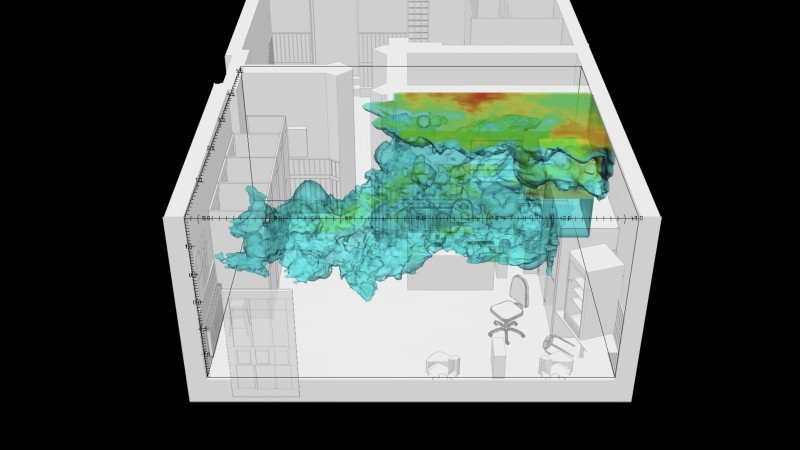
Fluid dynamics simulation of gunpowder residue particles (ammonia) within the front room
of the internet cafe. Image: Forensic Architecture and Dr. Salvador Navarro-Martinez, 2017
Supported by:














